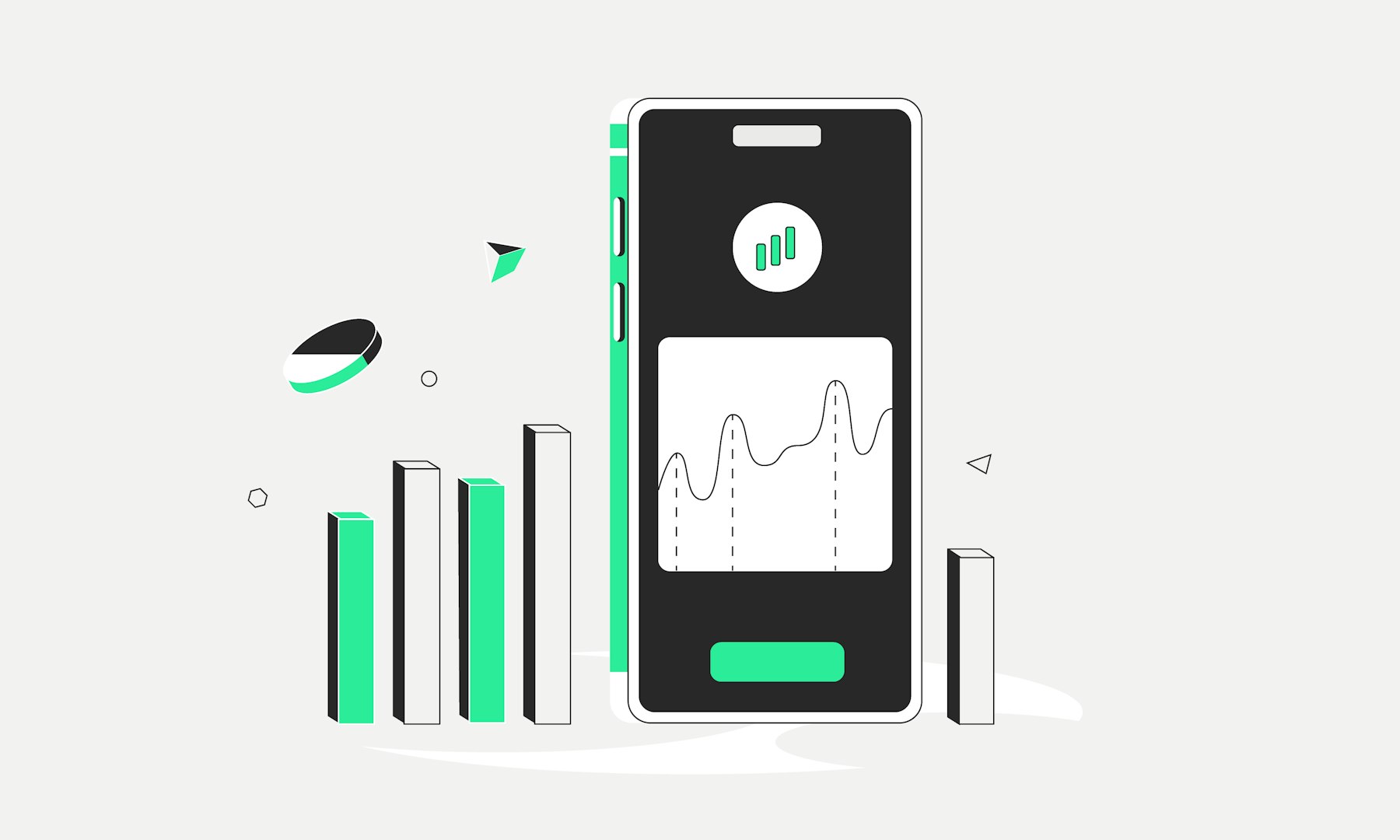Explanation: What is volume trading?
Volume trading is a method where traders use trading volume – the number of units of an asset traded within a specific period – as a key indicator to analyse market behaviour and make better decisions. This trading strategy assumes that volume shows how strong a trend is, how much interest market participants have and in which direction prices might move.
For example, if a stock's price rises while trading volume also increases, it indicates strong market support. On the other hand, if the price falls while volume rises, it could suggest increasing selling pressure. This method is often used alongside other forms of analysis, such as technical analysis.
How does volume trading work?
The mechanics of volume trading are straightforward: trading volume is compared to price movements to identify patterns and signals. Traders observe whether volume aligns with price movements or diverges from them.
A trend is considered strong if volume increases alongside price growth. Conversely, a downtrend with high volume suggests that selling is being supported by many market participants. A divergence, where price rises while volume falls, could indicate a weakening trend.
Additionally, volume plays a key role in analysing trend reversals and breakouts. A significant increase in volume during a price breakout can often confirm that broad market activity is driving the movement. Low volume, however, may suggest that a breakout is unsustainable. Understanding the relationship between volume and price movements helps traders make precise decisions and better interpret market patterns.
What are indicators in volume trading?
Indicators in volume trading are tools that help traders analyse trading volume and price movements more effectively. They translate complex data into visual or numerical signals that are easier to interpret. These indicators show how volume relates to an asset's price development and provide insights into trends, reversals or market strength.
There is a wide range of volume indicators, each highlighting different aspects of the market. Some measure capital flow, while others analyse the ratio of buying to selling volume or show how volume is distributed across certain price levels. Traders often use multiple indicators, such as OBV and VWMA, in combination to link trading volume with price movement and make better-informed decisions. Here, we explain what each volume trading indicator means.
On Balance Volume (OBV)
The On Balance Volume (OBV) indicator helps traders track capital flow into an asset. It calculates cumulative volume by adding the trading volume of days with rising prices and subtracting it from days with falling prices. A rising OBV indicates that capital is flowing into the market, suggesting potential price increases, while a falling OBV signals capital outflows and possible weakness.
Klinger Volume Oscillator (KVO)
The Klinger Volume Oscillator (KVO) helps traders identify long-term trends and short-term turning points in the market. This indicator combines price movements and volume data to represent the balance between buying and selling pressure. Positive values indicate stronger buying pressure, while negative values suggest selling pressure. The KVO is often used to detect early signals of a potential trend reversal.
Accumulation/Distribution Indicator
To assess underlying market strength, the Accumulation/Distribution (A/D) indicator is a useful tool. It links trading volume to the closing price position within the daily trading range. A closing price near the daily high indicates "accumulation," while a closing price near the low signals "distribution." This helps traders determine whether buyers or sellers are dominating the market.
Volume Weighted Moving Average (VWMA)
The Volume Weighted Moving Average (VWMA) considers trading volume in its calculations, giving more weight to periods with high trading activity. This provides a more accurate representation of market activity than simple moving averages. Traders use the VWMA to assess trends and determine whether significant volume is supporting price movements.
Chaikin Money Flow (CMF)
The Chaikin Money Flow (CMF) indicator measures how much capital is actually flowing into or out of the market. It combines volume and price data to generate positive or negative values. Positive values indicate buying pressure, while negative values signal selling pressure. The CMF is commonly used to confirm the strength of an existing trend or detect weaknesses early.
Volume Profile and Volume Indicator
The Volume Profile graphically represents trading volume at different price levels. It shows where significant trading activity occurs and helps traders identify support and resistance levels. Additionally, the general volume indicator provides basic information on trading activity, such as bar charts that display volume per price movement.
Footprint Chart
A particularly detailed tool for volume analysis is the Footprint Chart. It shows how many buy and sell transactions occurred at a specific price level, offering deep insights into market activity. This tool is especially useful for understanding supply and demand dynamics at a micro level and making well-informed trading decisions.
